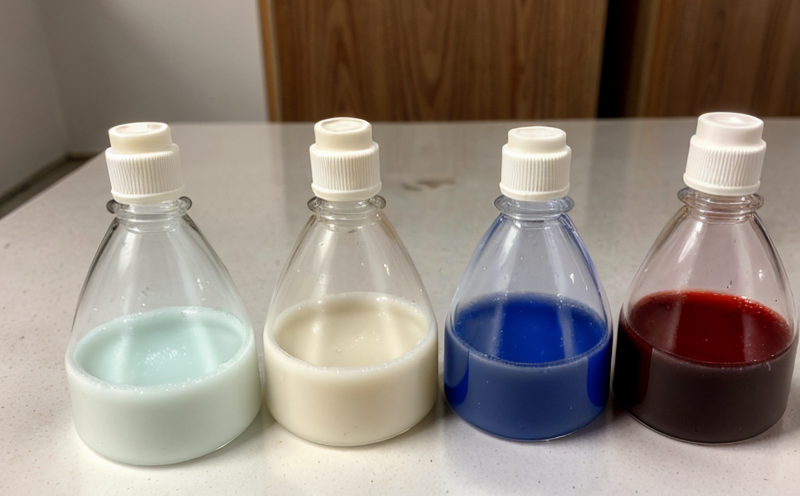GB T 5009 Monomer Residue Testing in Food Contact Materials
The GB/T 5009 series of standards is an essential component of China’s food safety regulatory framework. The standard for monomer residue testing (GB/T 5009) specifically addresses the issue of monomers migrating from food contact materials into food products, which can have significant health implications if not controlled.
Monomers are fundamental building blocks in polymer chemistry, and their use in food contact materials is regulated to ensure that they do not leach into edible substances during storage or consumption. The purpose of this testing protocol is to provide a reliable method for detecting monomer residues, ensuring compliance with safety standards and protecting public health.
Food contact materials are items such as packaging, containers, utensils, and other surfaces that come into direct contact with food. These materials can include plastics, resins, coatings, and adhesives used in manufacturing products like bottles, cups, and cutlery. The migration of monomers from these materials into food can occur through various mechanisms, including chemical reactions or physical processes during storage.
The testing method outlined in GB/T 5009 involves the extraction of potential monomer residues using appropriate solvents. Once extracted, the samples undergo analysis by gas chromatography-mass spectrometry (GC-MS) to identify and quantify the presence of specific monomers. This approach ensures high sensitivity and selectivity for detecting even trace levels of monomers.
The testing process is meticulously designed to address various factors that may influence the accuracy of results, such as sample preparation, extraction conditions, and analytical techniques. Compliance with these stringent requirements guarantees reliable data and consistent test outcomes.
By adhering to this standard, manufacturers can ensure their products meet regulatory requirements, thereby protecting consumers from potential health risks associated with monomer exposure. This is particularly important for industries like pharmaceuticals, where direct contact between raw materials and food items is common.
| Standard Code | Title of Standard |
|---|---|
| GB/T 5009.17-2014 | Determination of formaldehyde in food and its products |
| GB/T 5009.23-2003 | Determination of benzene, toluene and xylene in water |
| GB/T 5009.41-2008 | Determination of n-hexane in food and its products |
The standards listed above are just a few examples that complement the monomer residue testing protocol described by GB/T 5009. These additional tests help ensure comprehensive monitoring of potential contaminants, providing a holistic approach to maintaining food safety.
Given the critical nature of this testing, laboratories must employ state-of-the-art equipment and trained personnel to conduct these analyses accurately and consistently. The use of advanced analytical instruments like GC-MS ensures precision and reliability in detecting even minute amounts of monomers.
The implementation of GB/T 5009 also supports broader industry goals related to quality control, regulatory compliance, and consumer safety. By adhering to this standard, companies can demonstrate their commitment to producing safe and high-quality food contact materials that meet international standards.
Applied Standards
The testing protocol for monomer residues in food contact materials is underpinned by several key standards. These include GB/T 5009.17-2014, which focuses on the determination of formaldehyde; GB/T 5009.23-2003, dealing with benzene, toluene, and xylene in water; and GB/T 5009.41-2008, concerned with n-hexane analysis.
These standards are crucial for ensuring that the testing process is both efficient and effective. The use of these specific methods ensures that all potential contaminants are identified and quantified accurately. This comprehensive approach helps maintain high-quality food contact materials that meet strict safety criteria.
Industry Applications
The application of GB/T 5009 monomer residue testing is particularly relevant for industries involved in the manufacturing and distribution of food contact materials. This includes sectors such as pharmaceuticals, where direct contact between raw materials and food is common.
In the pharmaceutical industry, ensuring that packaging materials do not leach harmful substances into medicinal products is paramount. The use of this standard helps manufacturers comply with regulatory requirements while safeguarding public health.
Additionally, the testing method can be applied to various types of food contact materials, including plastics, resins, coatings, and adhesives used in manufacturing bottles, cups, cutlery, and other containers. By adhering to this standard, companies can ensure that their products meet safety standards and protect consumers from potential health risks.
Environmental and Sustainability Contributions
The implementation of GB/T 5009 monomer residue testing contributes significantly to environmental sustainability by promoting the use of safer materials in food contact applications. By identifying and mitigating the risk of harmful monomers migrating into food products, this standard helps reduce the overall environmental impact associated with improper material selection.
Companies that comply with GB/T 5009 demonstrate their commitment to responsible manufacturing practices, which is increasingly important for maintaining a positive corporate image. The use of safer materials not only enhances product quality but also supports broader sustainability goals by reducing waste and minimizing the risk of contamination during production processes.





